T R O S T
F R A U E N
F R A U E N



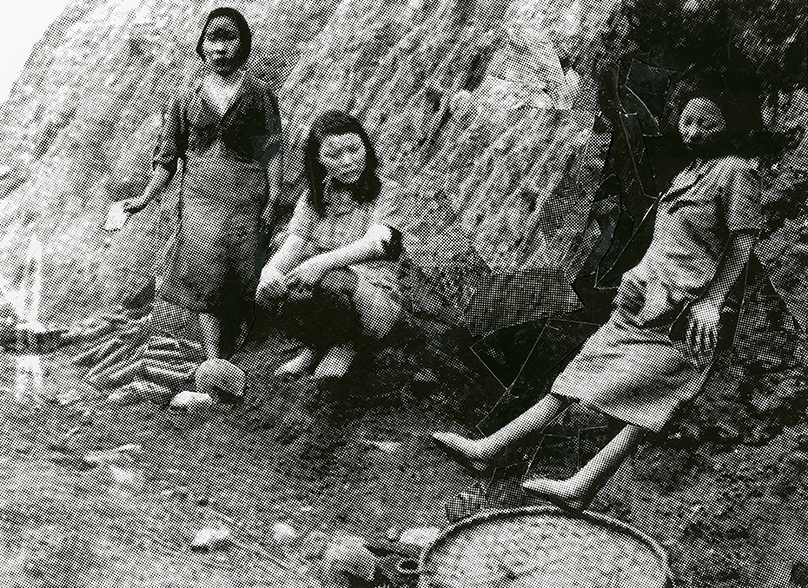
42 X 29,7 cm
silkscreen / collage
2017
silkscreen / collage
2017
M A N I P U L A T I O N - T R O S T F R A U E N
Der Begriff „Trostfrau“ ist ein Euphemismus.
Er beschreibt Mädchen und Frauen, die für die japanische Armee im zweiten Weltkrieg zwangsprostituiert wurden.
Schätzungen zufolge waren 100.000 bis 300.000 Mädchenund Frauen betroffen. Die meisten Opfer stammten aus Korea, China und aus anderen vormals besetzten Gebieten wie Indonesien, Malaysia, den Philippinen und Taiwan.
Nach dem Krieg wurden fast alle Dokumente aus Furcht vernichtet und viele der Frauen vom japanischen Militär ermordet.
Bei den Kriegsverbrecherprozessen wurde die Zwangsprostitution nicht thematisiert.
Bis jetzt gibt es in Japan keinen Konsens über dieses Kriegsverbrechen. Über die Schuldfrage wird nicht öffentlich diskutiert. Außerdem behauptet die japanische Regierung und einige konservative Politiker, dass die Trostfrauen ihre Dienste freiwillig erbracht hätten.
“
Comfort women” were women and girls forced to be sexual slavery by the imperial Japanese army in occupied territories before and during World War II.
It was estimated about 100,000 to 300,000 girls and women were served as comfort woman.
After the war, almost all of documents were destroyed and a lot of women were killed by the Japanese army.
Most of the current generation of Japanese people doesn’t know about this war crime.
Even Japanese government and conservative politician clam that these women were voluntarily joined the comfort women and serviced for them.
SCREENING Documentary Film Festival
European Media Art Festival l Onasbrück, Germany l April 2019
Hessen Talents 2019 auf der 69.Berlinale | Berlin, Germany l Feb. 2019
Kasseler Dokfest l BALI Kino l Kassel, Germany l Nov. 2018
9th Hessian University Film Day l BALI Kino l Kassel, Germany l Nov. 2018
TRICKREICH 18th l Gloria Kino l Kassel, Germany l Feb. 2018
Kurzfilmwanderung l Leipzig, Germany l July 2018
Manipulation - Trostfrauen from Seungkyu Jung on Vimeo.


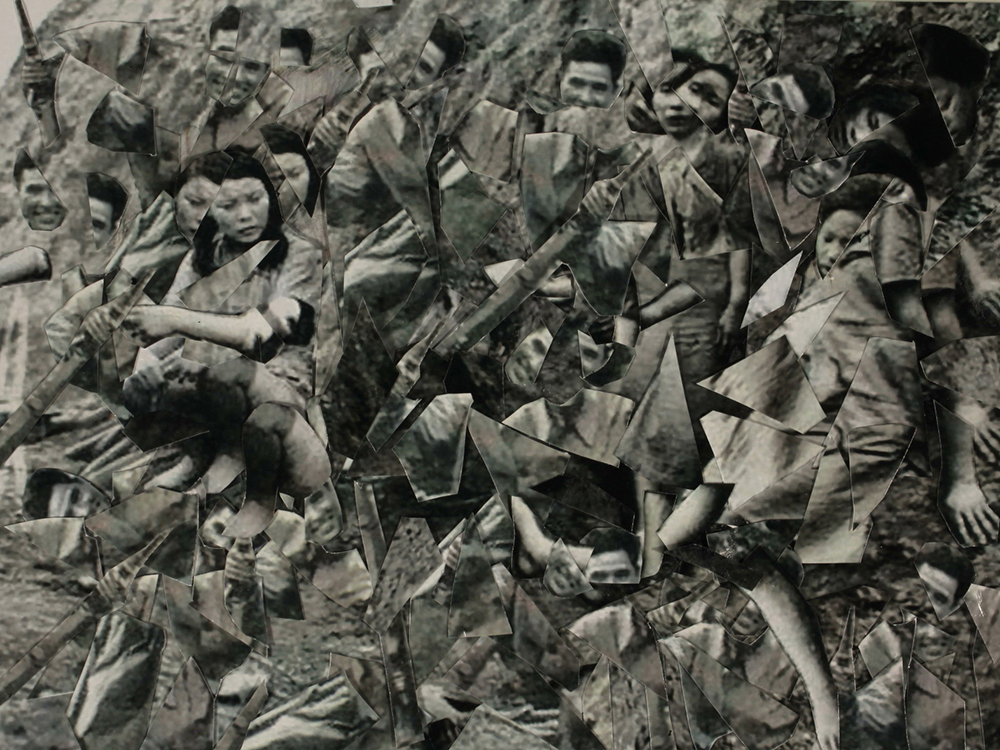



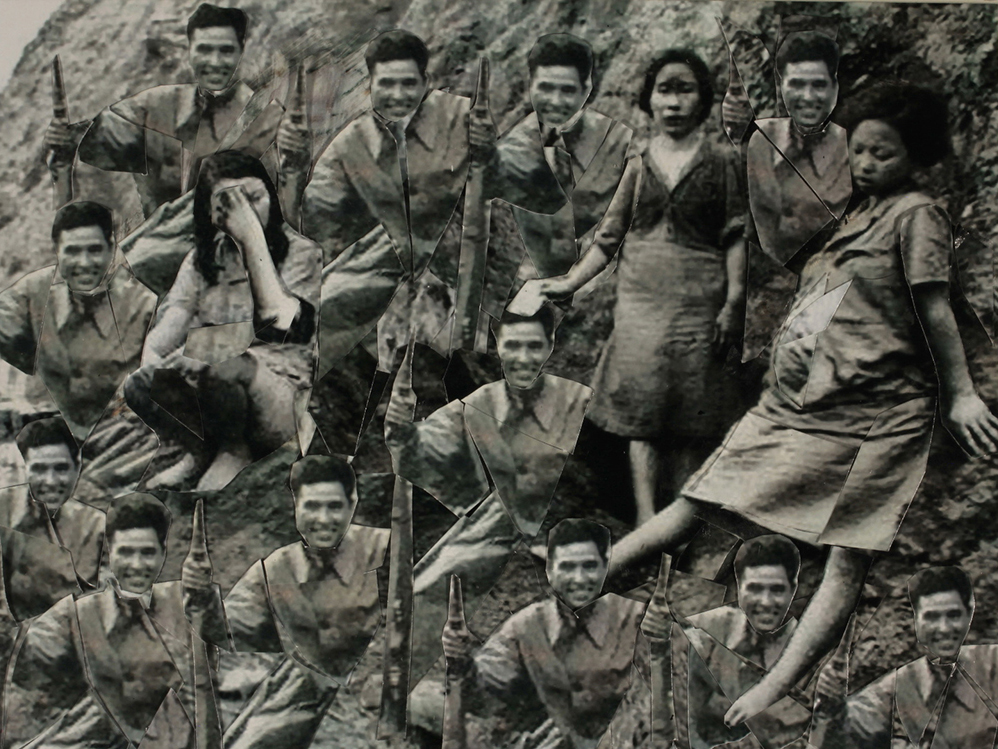


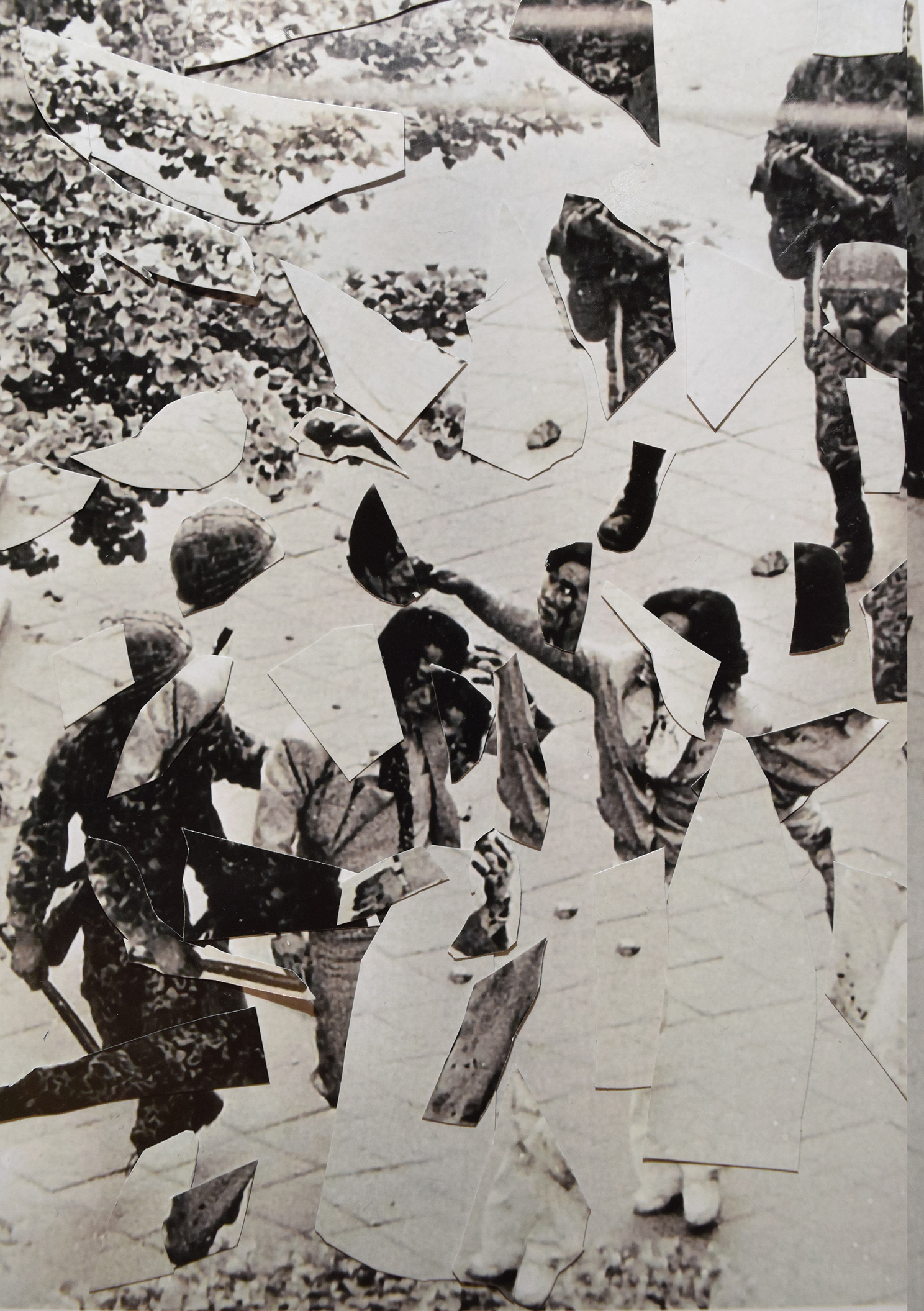
M A N I P U L A T I O N 18.05
Es geht um eine Manipulation von einer Geschichte oder einer Erinnerung.
Die Demonstration auf dem Foto wurde am 18. 5. 1980 in Südkorea gegen einen Diktator entstanden. Die spielte eine wichtige Rolle bei Demokratie in Südkorea.
Aber heutzutage behaupten einige Leute und einige konservative Politiker in Südkorea, dass die Demonstration von Sozialist in Nordkorea entstanden wurde. Das ist wie Fake News. Sie wollen die Ideologie benutzen und die Geschichte manipulieren, um davon zu profitieren.
Ich arbeitete mit einem einzigen Foto verschiedene Szenen und andere Geschichte. Statt photoshop Programms verwendete ich manuelle Collage. Dadurch wollte ich den Prozess darstellen, wie die Geschichte manipuliert werden kann.
Wenn man nicht einfach erkennen, was das original Foto ist. aber wenn man mit Aufmerksamkeit sieht, kann man erkennen, was die Wahrheit war.
This is a story about the manipulation and memory of history.
On May 18, 1980, a democracy movement against dictatorship occurred in Gwangju, Republic of Korea. Although the democratization movement failed, it had an important influence on the democracy of the Republic of Korea.
However, certain hyper conservative politicians and extreme right wingers today claim that the resistance was initiated by North Korean Socialists.
This is what ist coined as "fake news" in the media today. In order to seek and gain their own interests they would use ideological confrontation to manipulate history itself.
I made several different scenes and stories with just one picture alone. Instead of Photoshop, I relied on handmade collages because I wanted to show the process of how truth gets manipulated.
If we watch this video with sincerity and care, we will be able to notice the truth contained in it.

Manipulation 18.05
KASSELER DOKFEST 34th
Screnning l 11 Nov. 2017
BALI Kino, Kassel, Germany


Manipulation 18. 05 from Seungkyu Jung on Vimeo.

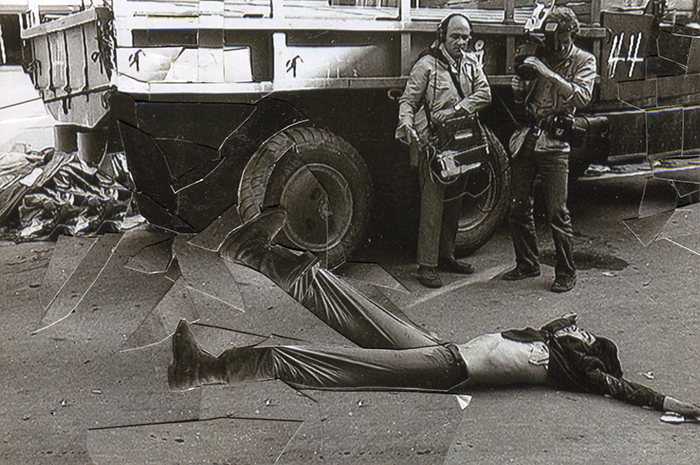







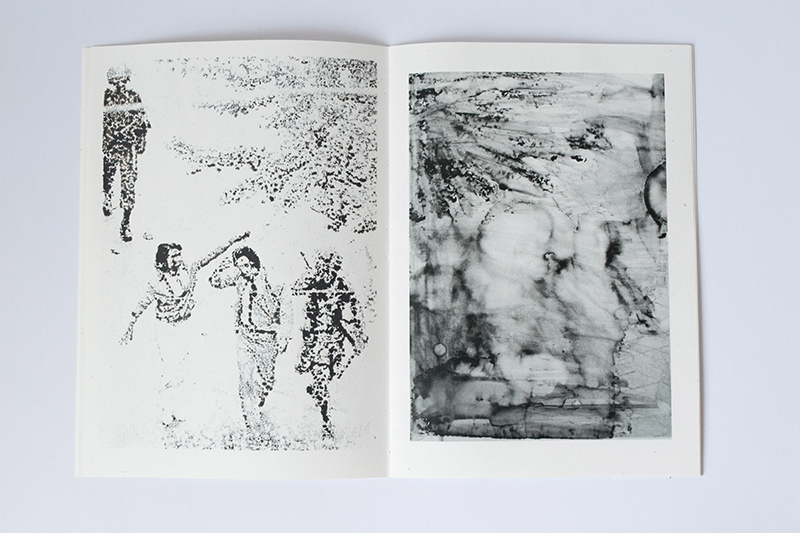






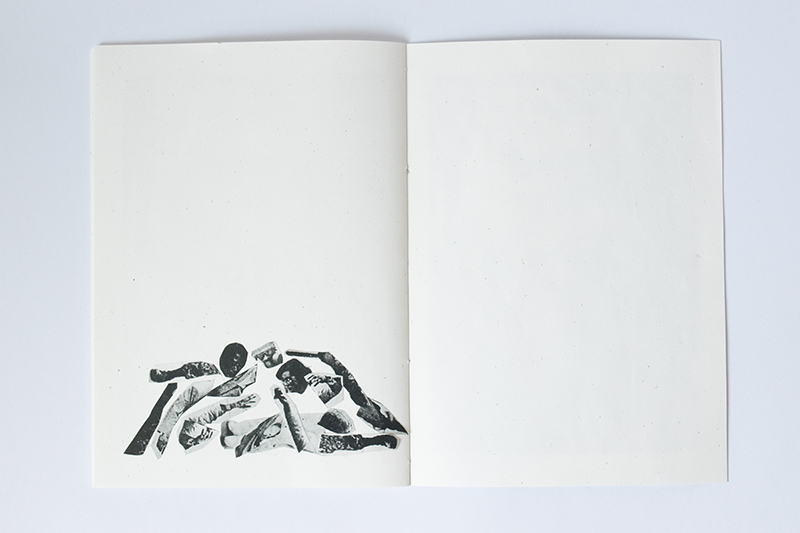
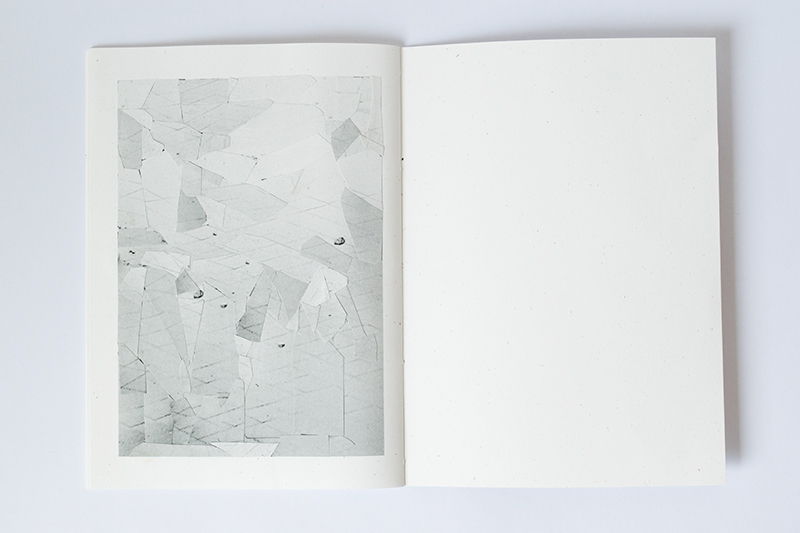
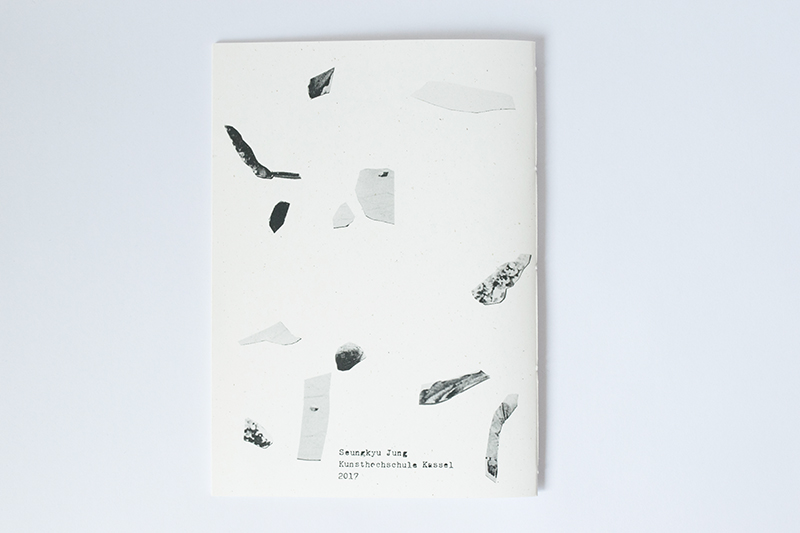
Manipulation 18.05
15 X 20.5 cm
30 pages
Collage book
Edition of 3
2017
15 X 20.5 cm
30 pages
Collage book
Edition of 3
2017
Digitale Gespenster (Digital Ghost)
This video work, Digitale Gespenster (Digital Ghost), is
inspired by the professor of philosophy, Byungcheol Han!s
book, Transparenzgeselschaft. It suggests a question
about transparency and the reliability that the digital
information-oriented society creates.
As our society is digitized, the transparency of society and
information has become an important value - more than
ever.
People take information without doubt and make it
standardized because everyone can easily approach,
share, and digitize it.
They exhibit and open themselves in the name of
transparency.
However, is the transparency in digital society positive and
the steely truth as much as we think?
As a video installation work, Digitale Gespenster (Digital
Ghost) is divided into two parts. It shows one place and
incident through nine different angles and points of view
like a CCTV monitoring a scene. It seems like one incident
is shown in different angles, but it actually presents scenes
from different times. One may say that it is operated, but
nothing is.
There is no exquisite digital control but it is simply filmed in
different times. Audiences receive different awarenesses
and emotions through nine different scenes on one
screen. In so doing it delivers a message of how digital
information and society can be easily operated and
controlled.
This video work, Digitale Gespenster (Digital Ghost), is
inspired by the professor of philosophy, Byungcheol Han!s
book, Transparenzgeselschaft. It suggests a question
about transparency and the reliability that the digital
information-oriented society creates.
As our society is digitized, the transparency of society and
information has become an important value - more than
ever.
People take information without doubt and make it
standardized because everyone can easily approach,
share, and digitize it.
They exhibit and open themselves in the name of
transparency.
However, is the transparency in digital society positive and
the steely truth as much as we think?
As a video installation work, Digitale Gespenster (Digital
Ghost) is divided into two parts. It shows one place and
incident through nine different angles and points of view
like a CCTV monitoring a scene. It seems like one incident
is shown in different angles, but it actually presents scenes
from different times. One may say that it is operated, but
nothing is.
There is no exquisite digital control but it is simply filmed in
different times. Audiences receive different awarenesses
and emotions through nine different scenes on one
screen. In so doing it delivers a message of how digital
information and society can be easily operated and
controlled.